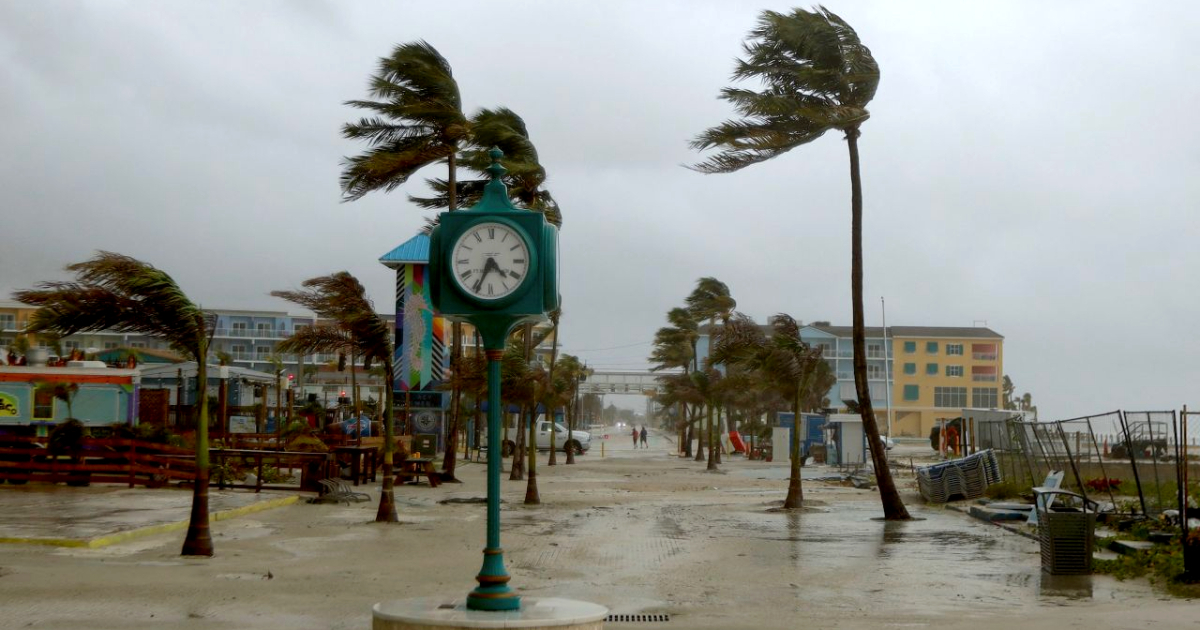Tropical Storm Debby has intensified into a hurricane as of Monday, heading towards the Big Bend coast in Florida, posing a significant threat to the southeastern United States, according to the National Hurricane Center (NHC).
Formed in the northeastern Gulf of Mexico, Hurricane Debby is approaching the U.S. coast with forecasts of potentially deadly storm surges and catastrophic rains. The NHC has warned of significant flooding in the southeastern U.S. throughout this week.
"Debby strengthens as it nears landfall in Florida's Big Bend. Expect potentially deadly storm surges in parts of Florida and major flooding in the southeastern United States," the NHC cautioned on social media.
The Category 1 hurricane is generating winds up to 128 km/h (80 mph). The storm is currently less than 100 kilometers (62 miles) from Cedar Key and about 150 kilometers (93 miles) south-southeast of Tallahassee, moving north at 19 km/h (12 mph).
Further strengthening is anticipated before landfall, with winds expected to reach 136 km/h (85 mph). Hurricane-force winds extend up to 72 kilometers (45 miles) from the center, and tropical-storm-force winds reach up to 225 kilometers (140 miles), according to the NHC.
Local Authorities and Evacuation Orders
Local authorities in Florida and other southeastern states are taking precautionary measures to prepare for Debby's arrival. A tropical storm warning has been extended to St. Augustine, Florida. Evacuation orders have been issued in the most vulnerable coastal areas, and residents are urged to follow official instructions and prepare for potential power outages and structural damages.
The threat of storm surges is especially concerning for the coastal regions of Florida's Big Bend. These surges can cause rapid and dangerous flooding, impacting both properties and infrastructure.
Additionally, the anticipated torrential rains could lead to extensive inland flooding, worsening drainage issues and increasing the risk of landslides in elevated areas.
Florida Governor Ron DeSantis has declared a state of emergency and mobilized the National Guard to assist in evacuation and rescue operations. Emergency teams are on high alert, and shelters have been set up for those needing to leave their homes.
Communities in Debby's path are urged to stay informed through media updates and NHC advisories. Quick preparation and response are crucial to minimizing the hurricane's impact and safeguarding lives and properties.
Debby is the second hurricane of the 2024 Atlantic hurricane season, following Hurricane Beryl, which struck Texas last month. Typically, the second hurricane forms after August 26, indicating that the 2024 hurricane season is following the intense pace forecasted by weather models.
FAQs about Hurricane Debby and Safety Measures
As Hurricane Debby approaches, it is crucial for residents and those in affected areas to have up-to-date information. Here are some frequently asked questions and answers to help you stay prepared and safe.
What areas are under evacuation orders due to Hurricane Debby?
Evacuation orders have been issued for the most vulnerable coastal regions in Florida's Big Bend and other southeastern states. Residents should follow local authorities' instructions and evacuate if advised.
What are the expected impacts of Hurricane Debby?
Hurricane Debby is expected to bring potentially deadly storm surges, catastrophic flooding, and strong winds affecting properties and infrastructure in its path.
How can residents stay informed about Hurricane Debby's developments?
Residents should stay updated through media reports and advisories from the National Hurricane Center (NHC) and local authorities to receive the latest information and safety instructions.
